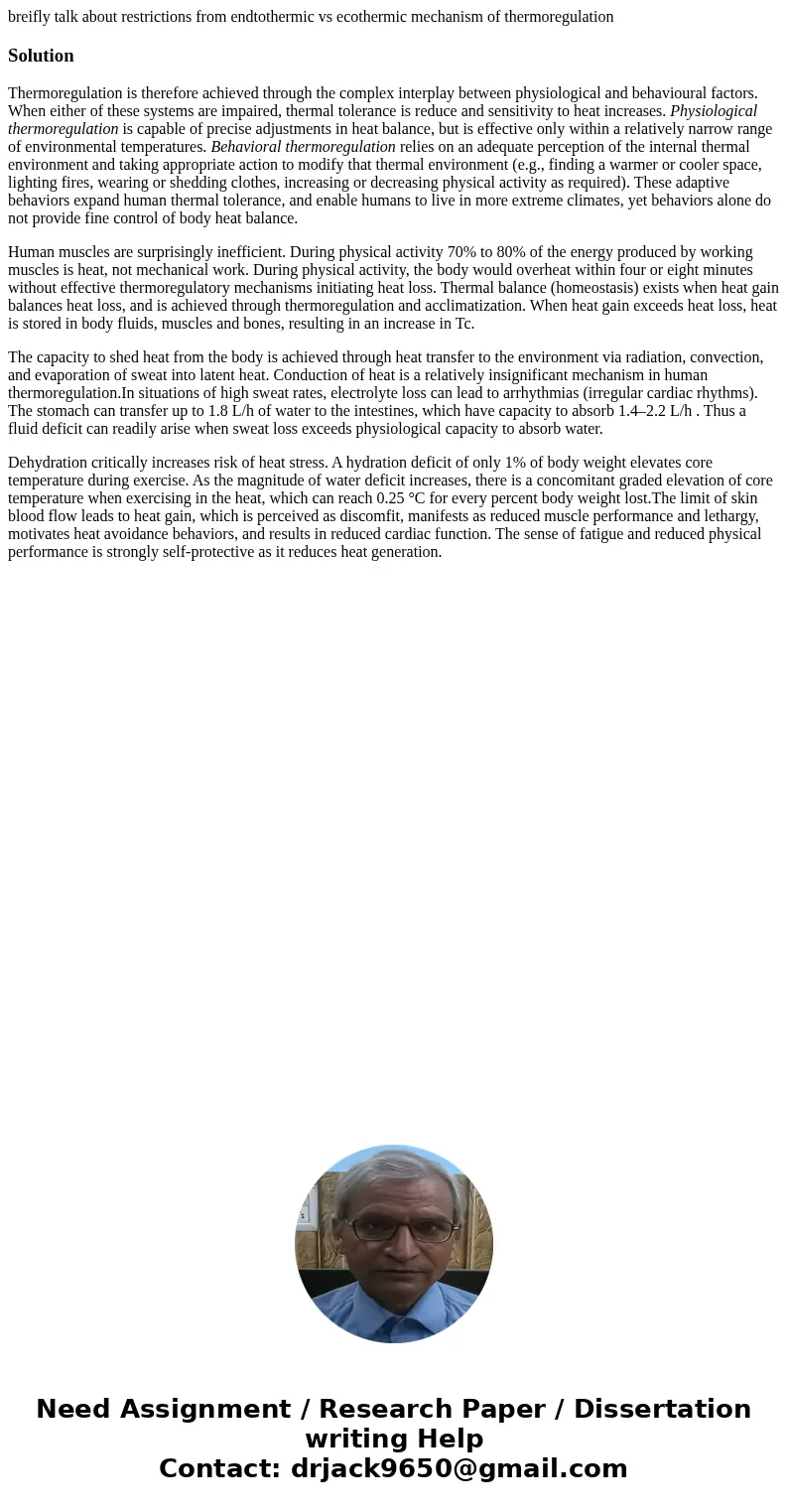breifly talk about restrictions from endtothermic vs ecother
breifly talk about restrictions from endtothermic vs ecothermic mechanism of thermoregulation
Solution
Thermoregulation is therefore achieved through the complex interplay between physiological and behavioural factors. When either of these systems are impaired, thermal tolerance is reduce and sensitivity to heat increases. Physiological thermoregulation is capable of precise adjustments in heat balance, but is effective only within a relatively narrow range of environmental temperatures. Behavioral thermoregulation relies on an adequate perception of the internal thermal environment and taking appropriate action to modify that thermal environment (e.g., finding a warmer or cooler space, lighting fires, wearing or shedding clothes, increasing or decreasing physical activity as required). These adaptive behaviors expand human thermal tolerance, and enable humans to live in more extreme climates, yet behaviors alone do not provide fine control of body heat balance.
Human muscles are surprisingly inefficient. During physical activity 70% to 80% of the energy produced by working muscles is heat, not mechanical work. During physical activity, the body would overheat within four or eight minutes without effective thermoregulatory mechanisms initiating heat loss. Thermal balance (homeostasis) exists when heat gain balances heat loss, and is achieved through thermoregulation and acclimatization. When heat gain exceeds heat loss, heat is stored in body fluids, muscles and bones, resulting in an increase in Tc.
The capacity to shed heat from the body is achieved through heat transfer to the environment via radiation, convection, and evaporation of sweat into latent heat. Conduction of heat is a relatively insignificant mechanism in human thermoregulation.In situations of high sweat rates, electrolyte loss can lead to arrhythmias (irregular cardiac rhythms). The stomach can transfer up to 1.8 L/h of water to the intestines, which have capacity to absorb 1.4–2.2 L/h . Thus a fluid deficit can readily arise when sweat loss exceeds physiological capacity to absorb water.
Dehydration critically increases risk of heat stress. A hydration deficit of only 1% of body weight elevates core temperature during exercise. As the magnitude of water deficit increases, there is a concomitant graded elevation of core temperature when exercising in the heat, which can reach 0.25 °C for every percent body weight lost.The limit of skin blood flow leads to heat gain, which is perceived as discomfit, manifests as reduced muscle performance and lethargy, motivates heat avoidance behaviors, and results in reduced cardiac function. The sense of fatigue and reduced physical performance is strongly self-protective as it reduces heat generation.

 Homework Sourse
Homework Sourse